Artsakh or Nagorno-Karabakh is located in the north-east part of the Armenian Highland. It is an inseparable part of the historic Armenia.
THE HISTORY OF ARTSAKH
Since the ancient times, Artsakh was one of the provinces of the historic Armenia. According to ancient sources, its north-east border was the Kura river. During the Urartian period (9 – 6 BC), Artsakh was also known as Urtekhe – Urtekhini.
Strabo, Claudius Ptolemy, Plutarchus, Dion Cassius together with other ancient historians have references about Artsakh in their works. They point out that the border between Armenia and Aghvank (Caucasian Albania, one of its oldest Caucasian neighbors representing mountain people) is the Kura river.
The cuneiform script of an Urartian King Sarduri the Second of Armenia (763 – 734 BC) mentions Karabakh for the first time. It mentions the country of Urtekhini. Greek geographer, historian and also a philosopher Strabo (63/64 BC – 24 AD) called it Orchistene (Artsakh).
According to Strabo, the area of the country was already under Armenian rule in 189 BC. People (as early as 100 BC) who lived in Greater Armenia, including Artsakh and Utik provinces, spoke the same language, namely Armenian.
Recognizing the importance of Artsakh, King Tigran the Great, in the middle of the 1st century BC, built Tigranocerta (Tigranakert) there. In addition, the ruins of the town have been preserved.
The Armenian historian, Movses Khorenatsi (5th century AD), states that the provinces of Utik and Artsakh during the 4-2nd centuries BC were a part of the Armenian Kingdom of Yervandouni (Orontids).
According to the geography book of the Armenian royal dynasty of Arshakouni (7th century), Greater Armenia consisted of fifteen provinces, among them Artsakh, Syunik, and also Utik.
Artsakh was the 10th province of the ancient kingdom of Greater Armenia or Armenia Major. In the 5th century, it became the place where Mesrob Mashtots, the creator of the Armenian alphabet, established the first Armenian religious school in the Amaras Monastery (now in Martuni district of Karabakh).
After the division of Greater Armenia between Byzantine and Persia (387), Eastern Transcaucasus, including Artsakh, soon falls under the rule of Persia.
Until the late Middle Ages, this event did not have an impact on the ethnic borders of the region. The right bank of Kura river along with Artsakh continued to remain Armenian-populated.
In 451, the Battle of Avarayr took place. During the battle, a united Christian army which consisted of Armenians, Georgians, and Caucasian Albanians fought against the Sassanid army. Consequently, many Armenian nobles retreated to mountains or forests in several provinces, including Artsakh. Artsakh soon became the center of resistance against Sassanid Iran.
THE MEDIEVAL ARTSAKH
During 5-7 centuries AD, an Armenian noble family Arranshahiks started to rule Artsakh. They also started to play an important role in the affairs of Caucasian Albania.
During their rule, there was a noticeable growth in science and also culture. As witnesses of those days state, there were as many churches and monasteries as there were “days in a year.”
According to David M. Lang, the ancient name of Artsakh most likely comes from the name of King Artaxias the First (190–159 BC), the founder of the Artaxiad Dynasty and the kingdom of Greater Armenia.
Folk etymology holds that the name is derived from “Ar” (Aran) and “tsakh” (woods, garden) (i.e., the gardens of Aran Sisakean, the first nakharar of northeastern Armenia).
In addition, the name today is used mostly by Armenians to refer to Nagorno-Karabakh, including areas of land such as Kalbajar that historically had been a part of Artsakh but that the Soviet Union did not permit to be included in the Nagorno-Karabakh Autonomous Oblast of the Azerbaijan SSR.
source: Wikipedia
- The twin cross-stones or khachkars from the 13th century at Davidavank monastery
- A fragment of Holy Stepanos Church in Togh, Hadrut from the 13th century
Only in the middle of the 8th-century nomadic Turkish tribes began to enter the northern borders of Karabakh. Consequently, the centuries-old long wars against the Armenian noble families began…
The nobility of Nagorno-Karabakh managed to maintain autonomy. They had to resist the invasion of the nomadic tribes, the hostile divisions of the neighboring leaders, and the Iranian military forces.
In the 7th–9th centuries, the Arabian Caliphate dominated the Southern Caucasus. In the 9th century, two Armenian princes, Sahl Smbatian along with Esayi Abu-Muse, revolted against the Arab rule.
They created two independent principalities in Artsakh, Khachen, and Dizak. At that period, the emperor of Byzantine, Konstantinos Porphyrogennetos addressed letters” to the prince of Khachen – to Armenia”, which, in addition, was the residence of Sahl Smbatian.
In 852–55, Sahl-Smbatian together with Esayi Abu-Muse fought against Arab commander Bugha. The House of Khachen continued ruling Artsakh until the early 19th century.
In 943 or 944, Russian troops, when going up the Kura river, appeared near Partav. At first, they were able to capture the city. However, the local princes managed to liberate Partav.
Since the 10th century, the House of Khachen played a very important role in the cultural and political life of the country. This influence led the name Khachen to be applied to the whole of Artsakh.
During the 11-12th centuries, nomadic Seljuk Turk tribes attacked Artsakh but it managed to retain autonomy.
During the end of the 12th century till the half of the 13th century, architectural amazing treasures like the St. Hovhannes Mkrtich Church and narthex at Gandzasar (1216-1260), the Cathedral Church of Davidavank (1214), and the Gtchavank Monastery (1241-1248) were built.
All of them are Armenian architectural masterpieces of the middle ages.
In 1230-40s, Tatar-Mongols conquered Transcaucasia. Hasan-Jalal, the ruler of Artsakh-Khachen, could save the lands partially from the invasion. However, after he died (1261), Khachen fell under the rule of Tatar-Mongols.
In the 15th century, things got worse under the rule of the Ak-Koyunlu and Kara-Koyunlu nomadic tribes. During this time, they obliterated many Christian monuments and churches.
It was during this period that the name “Karabakh” started to replace Artsakh. in addition, the most common explanation of the name “Karabakh” is the mixture of the Turkish word ‘kara’ meaning black, and the Persian word ‘bakh’ meaning garden.
In the late Middle Ages, the Armenian ruling clan of the past turned into meliks. Meliks were autonomous feudal lords who owned a status which codified the Persian Shah. As a part of the Persian Empire, Artsakh became a union of several Armenian feudal entities, famous as The Five Duchies or Khamsa Melikdoms.
During the rule of Nader Shah (1735), five Armenian Melikdoms (Dizak, Gulistan, Jraberd, Khachen, and Varanda) united in order to create one political-administrative entity, which is known as the “Khamsa Melikdoms” (Khamsa means five in Arabic).
In the 18th century, these Armenian Melikdoms became the foundation of the new administrative unit of Persia, Karabakh khanate. The Karabakh Melikdom dynasties, however, lasted until the 19th century.
During the 13-15th centuries, they co-operated with the Mongols. The rulers of Khachen interceded between the Mongols and The Kingdom of Cilicia. During the 16-18th centuries, the Khamsa
Melikdoms were an obstacle on the way of the Ottoman Empire, which, in its turn, wanted to invade the region.
KARABAKH AS A PART OF THE RUSSIAN EMPIRE
reference: karabakhfacts.com
In the 17-18th centuries, the Meliks of Artsakh started fighting for freedom against the Persian and Turkish domination. They also sent delegates to Europe and Russia in order to get help from the
Christian West.
The Meliks of Artsakh even corresponded with the Tsars of the Russian Empire, including Peter I and also Paul I.
The war between Russia and Persia (1804-1813) came to an end on 12 October, with the sign of the Treaty of Gulistan. According to the treaty, Persia conceded almost all the khanates of the Eastern
Transcaucasia to Russia. Among them were also the Karabakh and Gandzak khanates.
In 1867, as the Emperor ordered, the whole Transcaucasia got divided into 5 provinces:
- Kutaisi
- Tbilisi
- Yerevan
- Yelizavetpol
- Baku
Karabakh was mainly within the Yelizavetpol province. However, these administrative divisions with some minor changes lasted until 1918.
Under the rule of the Russian Empire, the center of Karabakh, the fortress town of Shushi, developed greatly. in addition, the Armenian districts which were in a poor condition during the Persian rule were also rebuilt. Each of them had its own church and square.
The seat of the Artsakh Diocese then moved to St. Amenaprkich (Holy Savior of All) Ghazanchetsots Cathedral in Shushi. There were also good economic conditions during those days, and it led to the development of such traditional Armenian crafts like the carpet-making and also silk-spinning.
In a short period of time, Shushi became one of the biggest cities in Transcaucasia. It was the center of Armenian arts and culture. The wealthy and flourishing city, however, was destroyed in March 1920, when Turkish and Azerbaijani forces invaded the city. Setting the city on fire they killed tens of thousands of Armenians. Shushi was completely destroyed…
THE FALL OF THE RUSSIAN EMPIRE
After the October Revolution in Russia(1917), from May 1918 to April 1920, Karabakh was de facto an independent land. As a matter of fact, during this period, Nagorno-Karabakh, which had 95% Armenian population, legally declared itself as an independent administrative-political state. Karabakh had a National Council, government, army and also many other things specific for a statehood.
On November 29, 1920, Soviet Army entered Armenia in order to establish the Soviet rule there. Soviet Armenia, along with the other South Caucasus states, remained de jure independent states for two more years.
The next day, the Azerbaijani Revolutionary Committee (the chief body of Bolshevik rule at the time) announced that it recognized the territories of Nagorno-Karabakh, Zangezur, and also Nakhichevan as inseparable parts of Armenia.
The new Soviet Armenian government was glad for this decision. Consequently, they took steps to establish governmental structures in Nagorno Karabakh. However, soon the Azerbaijani leadership stepped back from its declarations and also tried to take Karabakh and Nakhichevan under control.
On July 4, 1921, in Tbilisi, the capital of Georgia, the Caucasian Bureau of the Russian Communist Party
organized a meeting, during which the fact that Nagorno-Karabakh was a part of the Armenian SSR was confirmed.
However, the next day, as Moscow insisted and together with Stalin’s personal intervention, the decision was reviewed. Without a due procedure, they made a new decision: to place Nagorno-Karabakh within the jurisdiction of the Azerbaijani SSR as an autonomous oblast (province).
Nagorno-Karabakh was, in fact, never a part of the independent Azerbaijan. During the period of being a part of the Azerbaijani SSR, the authorities of Soviet Azerbaijan also repeatedly subjected Karabakh to harassment. They also violated the rights of the ethnic Armenian population.
However, throughout the history of the Soviet Union, the Armenian population in Artsakh time and again appealed to the USSR authorities to reestablish Nagorno-Karabakh as a part of the Armenian SSR.
In 1966, the Secretariat of the Central Committee of the Communist Party of the Soviet Union made a decision that tasked the Central Committees of Armenia and Azerbaijan with a joint discussion of the issue.
In 1977, the Karabakh issue started to be in the spotlight again, as a part of discussions over the USSR’s new constitution. However, no solution came out.
The Republic of Nagorno-Karabakh (NKR)
In the long history of Nagorno-Karabakh, the year 1988 takes a special place. The residents of Artsakh demanded defense of their freedom together with the recovery of their fundamental rights.
On February 20, the People’s Deputies of the Nagorno-Karabakh Oblast organized an Extraordinary Meeting and also wrote a formal petition to the Armenian SSR, Azerbaijani SSR, and Supreme Soviet of USSR. The request was the jurisdiction over the oblast transfer from the Azerbaijani SSR to the Armenian SSR.
The Soviet and Azerbaijani Parliaments, however, denied the request. The Armenian Parliament accepted it. On December 1, 1989, official representatives of Karabakh and Armenia decided to unite Artsakh together with Armenia.
- Protesters demand Karabakh reunification with Armenia in 1988
The Soviet authorities of Azerbaijan reacted to this lawful move of People’s Deputies of Karabakh by starting horrible massacres. The ethnic cleansing against all the Armenians who lived in Azerbaijan began. First, it was in Sumgait, after then in Kirovabad and also Shamkhor, later in Baku together with other parts of Azerbaijan.
- Morning of 20 January 1990, Baku
- sumgait massacres
They killed hundreds of peaceful citizens, and also tortured them. Others became refugees. On August 30, 1991, Azerbaijan declared its independence. After a few days, on September 2, Karabakh declared itself the Republic of Nagorno-Karabakh (NKR).
During the massacres of Armenians in Baku (1990) copies of the following map were also given to the gangsters. The black crosses indicate the places of Armenians in Baku, helping the gangs to find them more easily.
According to the law of 3 April 1990, “Procedure for Decisions about Union Republics leaving the USSR,” — “The decision on the secession of a Soviet Republic from the USSR made the people of that Soviet Republic by means of a referendum.”
“In case the Soviet Republic has autonomous republics, autonomous regions or autonomous territories within its borders, there will also be referendums separately in each of the autonomies. People living in the autonomies have the right to make their own choice on whether to remain in the Soviet Union or in the seceding Republic and also to decide on their state legal status.”
On December 10, 1991, a referendum across NKR took place. About 82% voters participated. Among them, about 99.9% wanted the independence of the Nagorno-Karabakh Republic. In addition, 0.02% voted against.
Consequently, since the Soviet Union was dissolved, two independent and legally equal states were formed on the territory of the former Azerbaijani SSR – the Republic of Azerbaijan and the Republic of Nagorno-Karabakh.
In response, the ethnic cleansing of Armenians turned into military aggression. The people of Artsakh, at great cost, managed to escape annihilation. In addition, they proved their determination and desire for freedom.
In May 1994, both sides of the conflict, Azerbaijan, and Nagorno-Karabakh, signed an open-ended ceasefire agreement. Armenia joined as well. The agreement has remained in force until today. As a result of the Azerbaijani-unleashed war, the self-defense forces of Artsakh could reclaim most of the territory that had been taken by the Azerbaijani army. There were, however, some exceptions of some parts in the northern and also eastern regions.
ARTSAKH TODAY
Presently, Artsakh is considered to be a Presidential Republic. The government of Artsakh pays a lot of attention to attracting foreign investments into the country. The government also pays much attention to the development of historical and natural tourism.
Currently, Artsakh consists of 8 administrative regions:
- Kashatagh
- Martakert
- Shahumyan
- Askeran
- Martuni
- Hadrut
- Shushi
- Stepanakert
On September 2, 1991, Stepanakert became the capital of Artsakh. In addition, it is named after Stepan Shahumyan. Stepanakert, a city of 55,000, is a tidy and beautiful country with hospitable people.
The symbol of the city is the “We Are Our Mountains” (1967) monument, also famous as Tatik-Papik (Grandma-Grandpa). They represent the mountain people of Karabakh.
- Tatik-Papik
Shushi is the cultural center of Artsakh. In the 19th century, this fortress-city was the 2nd largest city, in the Lower Caucasus, right after Tbilisi.
In its 200 years of existence, Shushi has been a cultural, artisan and also a trade center for the entire region. Currently, Shushi is undergoing reconstruction aimed at reviving its former glory.
It is the first major town in Artsakh which one should definitely visit when traveling to the Nagorno Karabakh Republic.
It is just 15 km outside of Stepanakert. One can get a good view of Stepanakert from the high perch of Shushi. It was this same perch from where Azerbaijan bombed Stepanakert during the war.
The town was the capital of Karabakh during the 19th century and was one of the largest towns in the Caucasus at the period. There were 12 churches, but today only two of them exist.
The flag of Artsakh is similar to the Armenian flag (red, blue, orange horizontal tricolor flag). The arrow pointing to westwards indicates the current separation from Armenia together with its hopes for union with the motherland.
The population of Karabakh is almost 200,000. This means that Stepanakert, with 55,000 residents is more like a large town than a city.
There is a small museum near the main open marketplace. A branch line of the Baku – Tbilisi – Batumi rail line reaches the city. Stepanakert also has a varied industrial structure and is especially very important for food processing, wine making, and also silk weaving. There are also a number of restaurants in Stepanakert to suit various tastes.
- Waterfall Zontiki
- Shushi Tank Memorial (Shusha)(c) 2000, Raffi Kojian,
- Hunot Canyon (Shusha)
- Ghazanchetsots Cathedral(Shusha)
- Gandzasar Monastery
- Davidavank Monastery
- Artsakh State Museum of Local History
Artsakh overall is rich with historical monuments. Because of the blockade of Azerbaijan, the only way one can travel to Artsakh is through Armenia. Even though Artsakh is not a recognized state yet, it has permanent missions in Armenia, U.S.A., Russia, France, Germany, Australia, and Lebanon.
Artsakh offers countless adventure, cultural and historical travel destinations. It is a place of unique art and architecture. Artsakh is also a home to medieval churches, monasteries and Armenian khachkars. The untouched beauty of picturesque landscapes and enticing mountains is breathtaking.
SOME INTERESTING FACTS
- Artsakh is home to Azokh cave, which is a must-see tourist destination in the country. This six-cave complex is that is one of the oldest places of proto-human remains in Eurasia.
- Artsakh has a lot to offer to those who want to explore the Hellenistic culture. The history of Tigranakert, which is one of the cities of Tigran the Great Armenian king throughout Armenian plateau, dates back to the first century BC.
 You can learn about the once-flourishing city and the unearthed artifacts at the State Archeological Museum of Tigranakert.
You can learn about the once-flourishing city and the unearthed artifacts at the State Archeological Museum of Tigranakert.
- The cuisine of Artsakh is famous for its “zhengyalov hats” (translates like “bread with zhengyal”). It is a mixture of more than 20 types of greens wrapped up in a thin layer of bread.
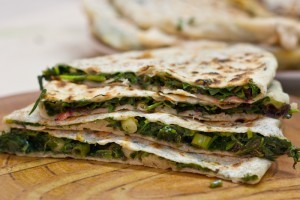 This is a healthy and very tasty dish, which one can find in almost all the restaurants, cafes and bistros in Artsakh and Armenia.
This is a healthy and very tasty dish, which one can find in almost all the restaurants, cafes and bistros in Artsakh and Armenia.
- People of Artsakh are experts of making wine and mulberry vodka. The land is famous for these two beverages.
- Artsakh is also a hiking destination. The mountainous landscape, luxurious forests and fast-running rivers make Karabakh a wonderful place which one can explore on foot.

- The Guardian included Karabakh in its list of best locations for adventure. The author of that article mentions that a trip to Artsakh is quite not for the “faint-hearted” due to “border skirmishes and ongoing wrangling for political control”.
- People of Artsakh are very hospitable and easy-going.
They can show you their country and guide if needed.


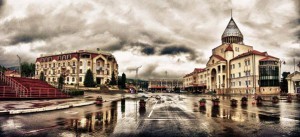
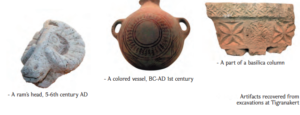
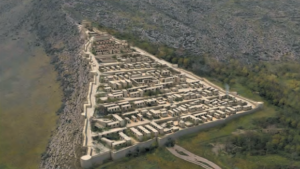


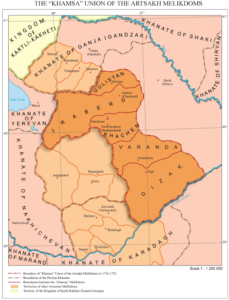
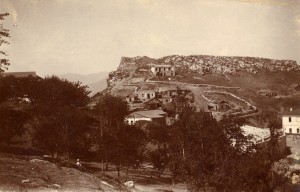
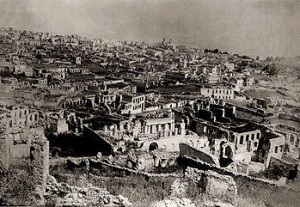
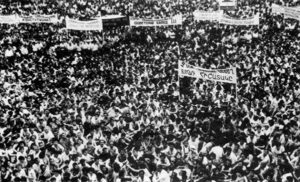




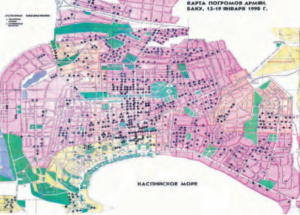
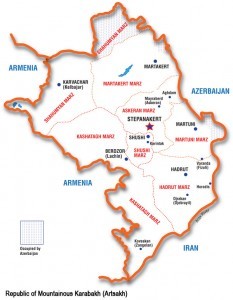
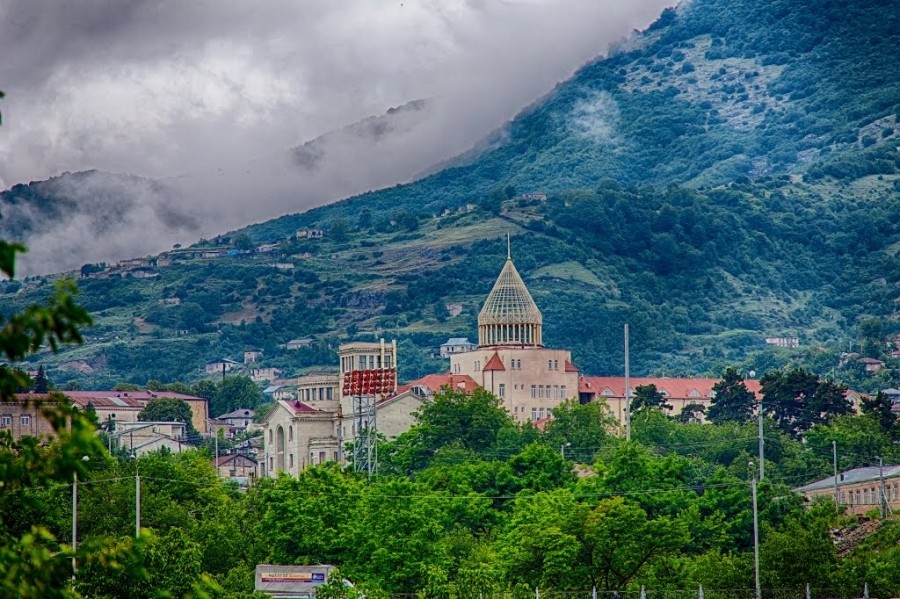


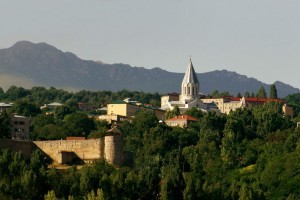
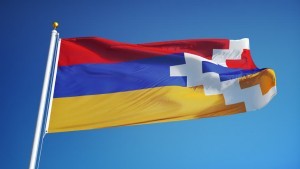







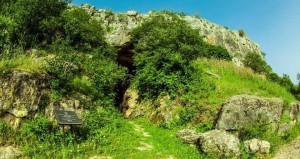
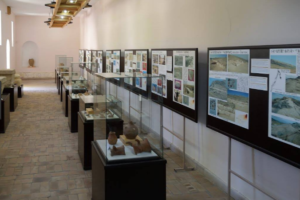
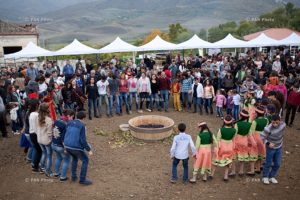
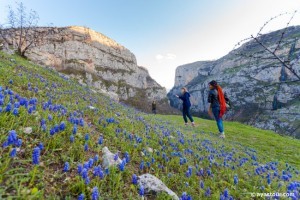
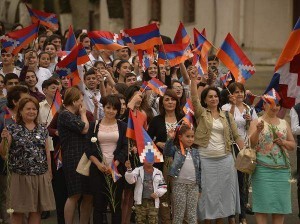





Leave a Comment